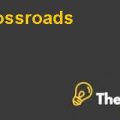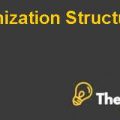Case Synopsis
Lyons Document Storage Corporation had issued $ 10 million bonds, with a total maturity period of 20 years and offered a coupon rate of 8%, with the interest paid semi annually. When the company issued the bonds in 1999, it received only $ 9.1 million. The market rate of interest in 1999 was 9%, which means that the bonds had been issued at a discount. However, the effective market interest rate has now decreased to 6%. Management has always funded the growth of the company through debt and never issued new equity. Therefore, the management of Lyons Document Storage Corporation has to explore the consequences of repurchasing the outstanding bonds of the company with the cash obtained, by issuing the new bonds with much lower rates of interest. The impact on reported earnings, cash flows, annual interest payments and the financial position of Lyons Document Storage Corporation would be analyzed in this case.
Question 1
a).
Lyons Document Storage Corporation had issued bonds worth a par value of $ 1000 for a total of $ 10 million, with a coupon rate of 8% in the year 1999. The investors during this period were demanding a rate of 9%, they were bidding only for $ 908.24, and all the bonds were sold for this price against the $ 1000 par value. This is known as the discount bond. On the other hand, a premium bond is one whose price is higher than its par value. Discount or premium bonds occur only, when there is a different between the market interest rate and the coupon rate of the bond. The price of all the bonds would reach at its par value at maturity, regardless the expected or the market interest rate.
Lyons Document Storage Corporation Bond Accounting Harvard Case Solution & Analysis
b).
The company had received $ 9.1 million from its 8% coupon bonds issued in 1999, as shown in exhibit 1 in appendices.
c).
The recomputed balance of the long-termdebt in December 2006 and December 2007, is $ 9272571 and $9307880. The amortization schedule for bond issue, is shown in exhibit 2 in appendices.
d).
The current market value of the bonds at the current effective interest rate of 6% is $ 11.52 million, as shown in exhibit 3 in appendices.
Question 2
By issuing the new bond, the company can raise $ 10 million, but it has to pay $ 11.52 million.Therefore, the remaining $ 1.52 million would be paid from the retained earnings, and it would be a cost for the company as shown in exhibit 4 in appendices. The retained earnings would be reduced in 2010, due to the $ 600,000 of coupon payments in 2010. The effect on the earnings shows that they would decline in 2009 and 2010.
The current year earnings on the other hand would increase and remain same stated. The charts and updated balance sheet is shown in exhibit 5 in appendices. The impact of the current and new bonds on the cash flows is depicted in exhibit 6 in the appendices. The saving from issuing the new bond would be bad choice, we would suggest notissuing the new bond....................
This is just a sample partial work. Please place the order on the website to get your own originally done case solution.












